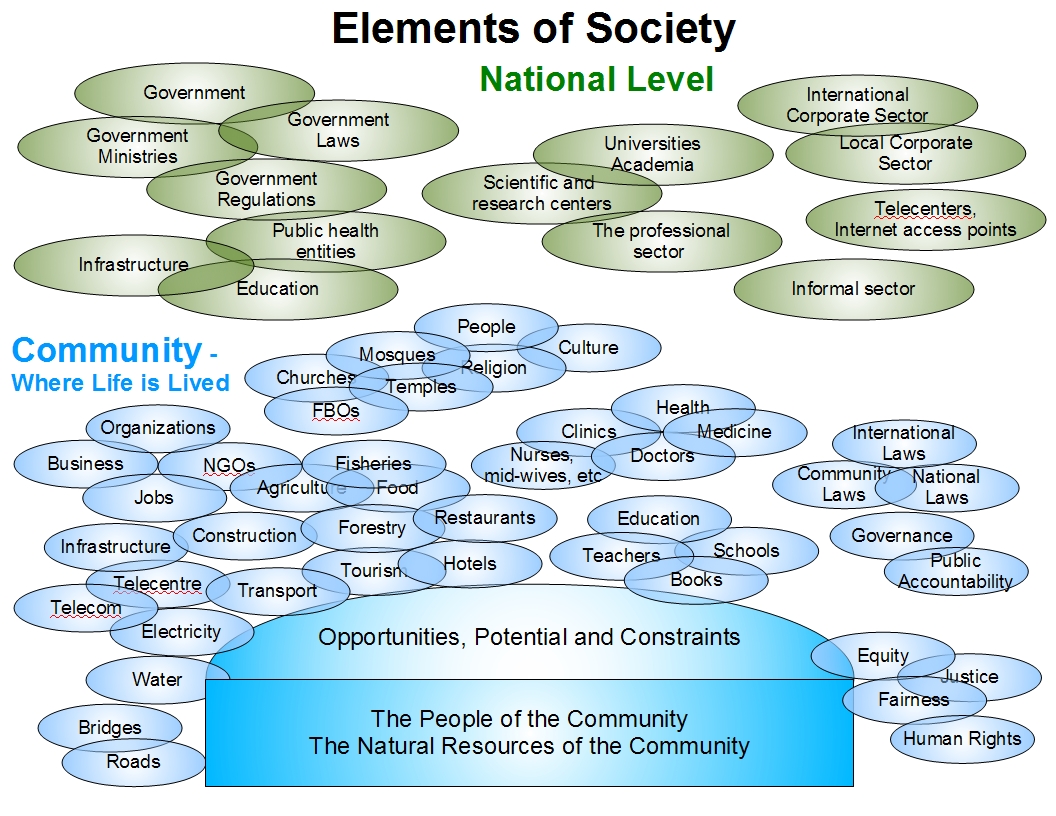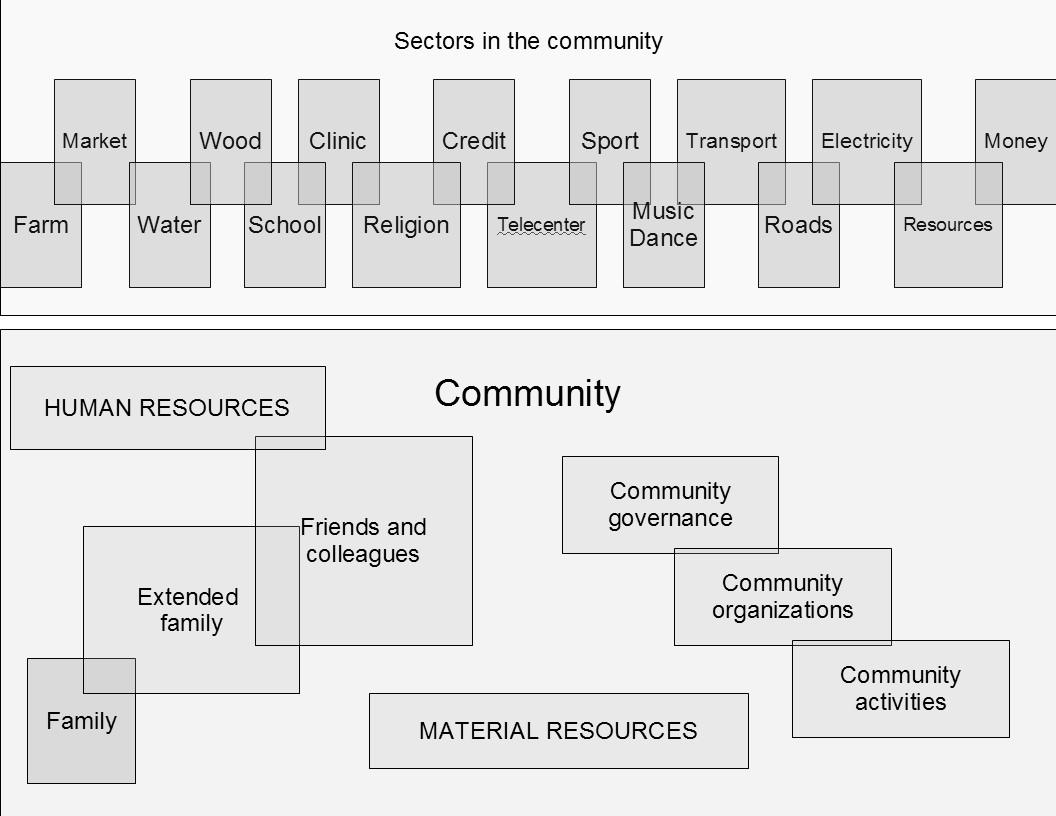
Date: 2025-12-07 Page is: DBtxt003.php bk0001020
The Basic Concepts of True Value Metrics
Chapter 1 ... Introduction and Background
1-2 Context … The World We Live In
Extreme Complexity
The many elements of society
There are many elements of society that make it complex. The following graphic shows some of this complexity ... in a very simplified manner. There is complexity at the national level and the international level (not shown) and all sorts of complex detail at the community level.

Society and economic activity are complex … with many different organizations and structures that make up the whole.
More understandable at the community level
In the community where life is live there are all sorts of activities and organizations. The complexity is real, but on a scale that is understandable.
- There are people and families and communities.
- There are people and activities and projects and organizations
- There are buildings, blocks, neighborhoods and communities
- There are activities and sectors.
- There are no simple relationships … there are many variables.
But there are complexities in a community … and there are a zillion different ways in which simple analysis can go wrong. Every human being is different … and this has the potential to be useful or to be a constraint in making progress happen. A place where there is progress is one where people have been able to organize so that there is progress, and other places where there is limited progress, it is because the human energy is getting wasted in one way or another.

This is a major simplification … maybe somewhat simplistic. The point is that at the community level it is possible to use very simple observation … “management by walking around” … to understand what is important and what is not. Progress is going to be achieved when resources are applied to priorities that have a high relevance in the specific community and decision makers are held accountability for performance … using objective independent metrics.
Governments, multilaterals and others
The overhead structure of the world's governance is big and complex … and a big reason why it is difficult to make progress. The World Bank and the regional development banks that work in ways that are very similar to the World Bank have procedures and processes that are very “Top Down” and, in the main, very inflexible. The same goes for the United Nations and the various bilateral agencies.
Non-governmental organizations (NGOs) were intended to bring more private sector innovation and enterprise into action … but where they get their funding from the public sector, they soon become the paid servants of the of the government, devoid of much enterprise and initiative. They maintain the “top down” way of working much to the detriment of potential beneficiaries.